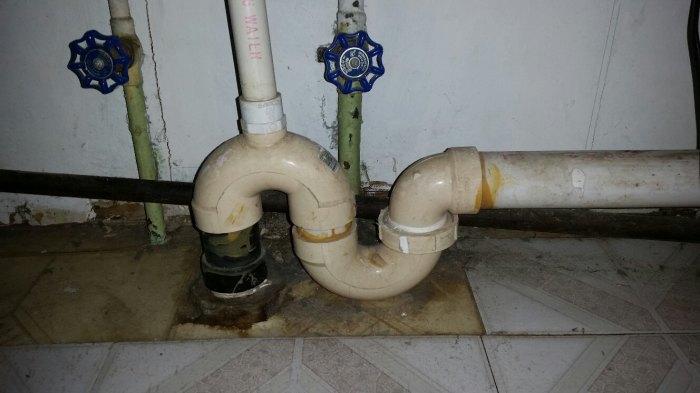Traps can be protected from siphonage by what – Understanding the concept of siphonage and its impact on traps is crucial. This article delves into effective methods for safeguarding traps from siphonage, emphasizing the significance of proper installation and maintenance. Explore the intricacies of trap design, siphonage prevention techniques, and the role of regular inspections to ensure optimal plumbing system performance.
Siphonage, a phenomenon that can drain water from traps, leaving them vulnerable to sewer gases and odors, poses significant challenges to plumbing systems. To combat this, various measures can be employed, including the installation of check valves, the selection of siphon-resistant trap designs, and the implementation of regular maintenance practices.
This article provides a comprehensive overview of these strategies, empowering readers with the knowledge to protect their plumbing systems from the adverse effects of siphonage.
Traps Prevention from Siphonage: Traps Can Be Protected From Siphonage By What

Siphonage occurs when water flows out of a trap, breaking the water seal and allowing sewer gases to enter the building. This can happen when a fixture is used heavily, such as a toilet or sink, or when there is a sudden drop in water pressure, such as when a water main breaks.
There are several ways to protect traps from siphonage, including:
- Installing a check valve in the trap
- Using a trap with a deep water seal
- Installing a vent pipe to the trap
It is important to properly install and maintain traps to prevent siphonage. This includes making sure that the trap is properly sized and that the vent pipe is properly installed.
Siphonage Prevention Techniques, Traps can be protected from siphonage by what
Check valves are one of the most effective ways to prevent siphonage. A check valve is a one-way valve that allows water to flow in one direction but not the other. When installed in a trap, a check valve will prevent water from flowing out of the trap when the water pressure drops.
Check valves are available in a variety of sizes and materials. The type of check valve that is used will depend on the size of the trap and the type of plumbing system.
To install a check valve in a trap, follow these steps:
- Remove the old trap.
- Install the check valve in the trap.
- Reinstall the trap.
Trap Design and Siphonage Resistance
The design of a trap can also affect its resistance to siphonage. Traps with deep water seals are less likely to siphon than traps with shallow water seals. The depth of the water seal is measured from the bottom of the trap to the top of the water level.
There are a variety of trap designs available, each with its own advantages and disadvantages. Some of the most common trap designs include:
- P-traps
- S-traps
- U-traps
P-traps are the most common type of trap. They are easy to install and maintain, and they provide a good level of siphonage resistance.
S-traps are similar to P-traps, but they have a curved shape. This makes them more resistant to siphonage than P-traps.
U-traps are the most resistant to siphonage. However, they are also the most difficult to install and maintain.
Maintenance and Inspection
Regular maintenance is essential to prevent siphonage. This includes inspecting traps for any damage or leaks, and cleaning traps to remove any debris that could block the flow of water.
To inspect a trap, follow these steps:
- Remove the trap.
- Inspect the trap for any damage or leaks.
- Clean the trap to remove any debris.
- Reinstall the trap.
Traps should be inspected at least once a year. However, more frequent inspections may be necessary if the trap is located in a high-traffic area or if there is a history of siphonage problems.
Additional Considerations
In addition to the methods discussed above, there are a number of other factors that can affect siphonage, including:
- The size of the pipe
- The slope of the pipe
- The presence of other fixtures on the same drain line
It is important to consider all of these factors when designing and installing a plumbing system to prevent siphonage.
In some cases, it may be necessary to use anti-siphonage devices to prevent siphonage. Anti-siphonage devices are devices that are installed on the drain line to prevent water from flowing out of the trap.
FAQ Section
What is siphonage and how does it affect traps?
Siphonage occurs when water flows through a pipe, creating a vacuum that can suck water from a trap, breaking the water seal and allowing sewer gases to escape.
How can traps be protected from siphonage?
Traps can be protected from siphonage by installing check valves, using siphon-resistant trap designs, and ensuring proper installation and maintenance.
What is the importance of proper installation and maintenance?
Proper installation and maintenance are crucial to prevent siphonage. Traps should be installed at the correct height and slope, and regularly cleaned to remove debris that can obstruct water flow.

